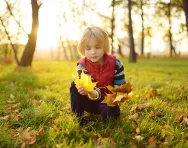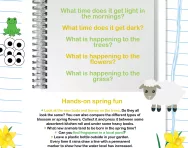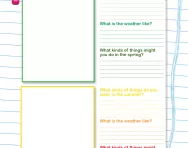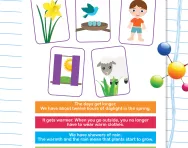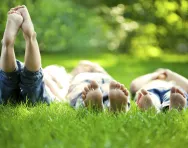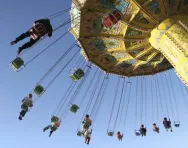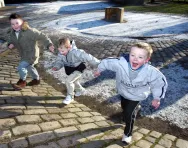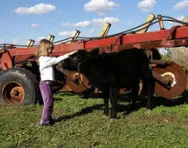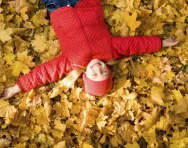TheSchoolRun.com closure date
As we informed you a few months ago, TheSchoolRun has had to make the difficult decision to close due to financial pressures and the company has now ceased trading. We had hoped to keep our content available through a partnership with another educational provider, but this provider has since withdrawn from the agreement.
As a result, we now have to permanently close TheSchoolRun.com. However, to give subscribers time to download any content they’d like to keep, we will keep the website open until 31st July 2025. After this date, the site will be taken down and there will be no further access to any resources. We strongly encourage you to download and save any resources you think you may want to use in the future.
In particular, we suggest downloading:
- Learning packs
- All the worksheets from the 11+ programme, if you are following this with your child
- Complete Learning Journey programmes (the packs below include all 40 worksheets for each programme)
You should already have received 16 primary school eBooks (worth £108.84) to download and keep. If you haven’t received these, please contact us at [email protected] before 31st July 2025, and we will send them to you.
We are very sorry that there is no way to continue offering access to resources and sincerely apologise for the inconvenience caused.
6 learning activities for spring weather
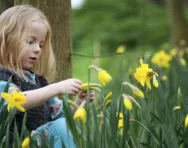
Spring is a fabulous time to stretch your legs and get outside after a dark (and in this year's case extremely wet!) winter. Position yourself in the shelter of a friendly wall and you might even be able to take off your coat!
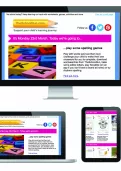
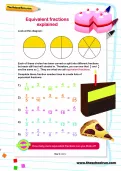
Start a unique learning programme!
- Weekly programme for each school year
- Worksheets sent direct to your inbox
- Keeps your child's learning on track
Children love getting outside if they have been cooped up for a long time. Give them a moment or two to just run around like spring lambs, kicking off the dust of the indoors and turning their faces to the sun. Once they have settled back into life in the great outdoors you can get creative with some of these green shoots of ideas...
Learn to love lambing season
You don't have to live in the countryside to see newborn lambs frolicking in fields. Many schools have links with local commercial farms and more and more city farms have small amounts of livestock on show to the public.
Children benefit hugely from getting out and about and a visit to a local farm (visit the Federation of City Farms & Community Gardens to find a farm local to you) to see the lambs can kick start a literacy project or form part of a study on food sustainability. Farming and Countryside Education can give you all the information you need to know when visiting, so pull on your wellies and get down on the farm!
Get up close and personal with frogs and toads
Frogs and toads like to be left alone at this time of year as they are busy laying their spawn. This doesn’t mean we can’t watch them, though, and learn about these unique little characters.
If you have a garden, make a mini-pond for frogs to live in or treat a toad to a home-made home. You can also observe amphibians in local parks (find out more about where to look on the Froglife website); encourage children to take photographs of frog or toad spawn once a week and create a little scrapbook or blog where they write about what the baby frog or toad is doing as it goes through its lifecycle. Use the pictures to illustrate their account.
For a more hands-on approach to learning, use packet jelly to simulate the feel of frog spawn; let children dip their hands in and feel what it might be like to be a hatching tadpole (cold tapioca also works well!).
Experiment with timelapse photography
Spring is a great time of year to take daily photographs and track how the landscape near you changes. Take one picture a day and create a ‘month book’ to see how things have grown in just a few days.
If you are very scientifically minded you can record the rate at which flowers and small plants are growing, too; as the weather warms up they will speed up enormously.
Create an urban spring
Create beautiful surprises for people by purchasing small plug plants (mini plants ready to put in the ground) and planting them in unlikely places.
Hang easy-to-make square cloth bags made from old fabric on hooks on walls and fill them with these pretty plants to make a lovely display (remember to water them as the weather dries out). Old boots and shoes, handbags and all sorts of discarded containers also make unusual plant containers – how creative can you be?
Have some fashion fun
With Easter coming soon why not emulate the fashionistas by trying a new and daring approach to headwear?
The challenge is to make an Easter Bonnet using only natural materials. Entwine ivy and other vine like climbers for the basic framework, then decorate with whatever you can find. (Make sure that you have permission to take any living plant material – no prize-winning gardens should be harmed in the making of your millinery masterpiece!)
Find decorative uses for husks and empty seed pods
Many plants in the natural environment will hang onto their empty seed pods long after they need them. If you have a country walk or a park near to you look for these husks and collect a few. Press them between sheets of newspaper and some heavy books for a few days then arrange them between sheets of laminate, ensure they are as flat as possible to go through the laminator.
Once laminated these can be cut out to make bookmarks, badges, pendants, placemats – the list is as long as your imagination!
Learning through Landscapes specialises in outdoor learning and play through education. They aim to enable children to connect with nature, be more active, be more engaged with their learning, develop their social skills and have fun.
